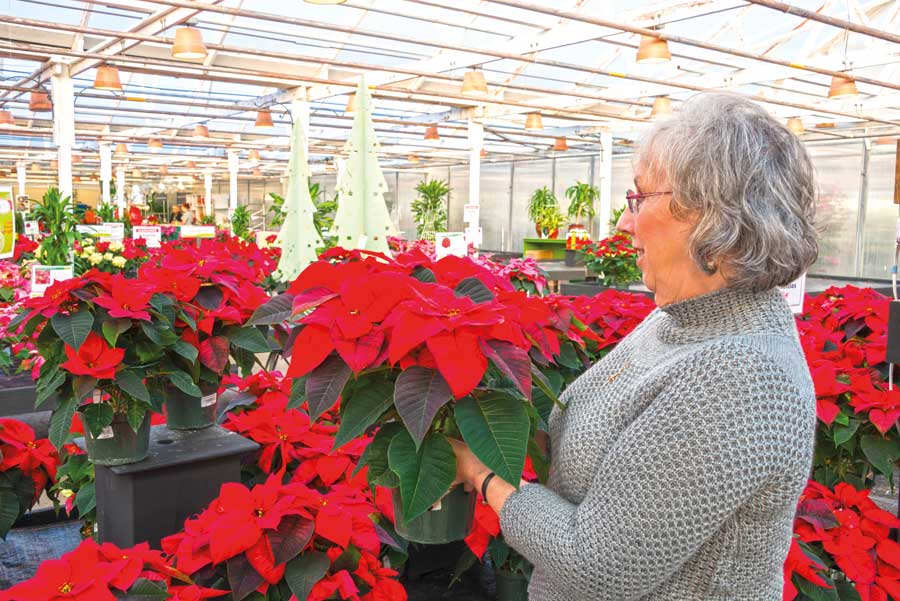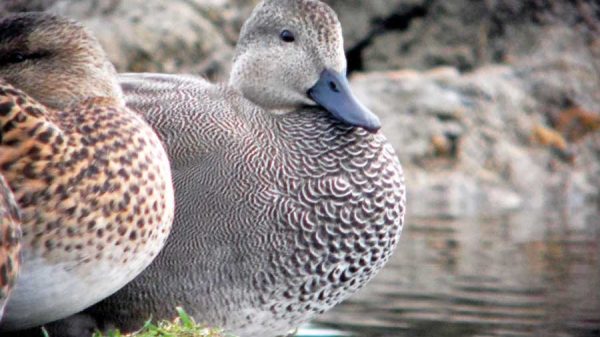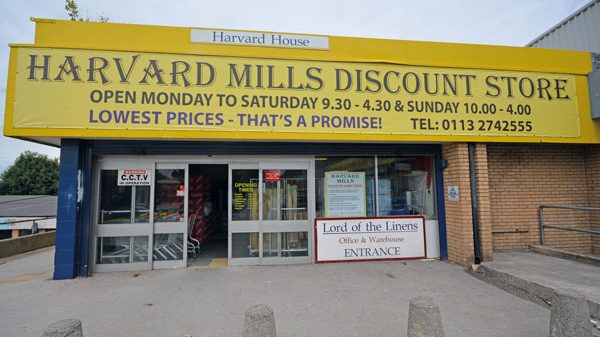As autumn drifts into winter the pace of work in the garden slows considerably, although there are still tidying up and repair jobs to do in order to be ready for spring. Our thoughts are less about finding jobs to do and more about celebrating the season of year and spending time with friends and family. Christmas is looming and all that goes with it are demanding our attention and time. Nurseries and garden centres are welcoming visitors who are looking to inject a little seasonal cheer, with potted plants and bulbs. Poinsettias, cyclamen, hyacinths and narcissus are specially grown to brighten the gloomy winter days. Choosing carefully will help ensure that your seasonal displays will stay fresh well into the new year.

Poinsettias are perhaps the most purchased pot plant at this time of year, and the traditional red cultivars have been joined by a ever increasing range from white, through lemon, pink and burgundy and even variegated, so there is bound to be one to suit our constantly changing colour and decoration tastes.
How well they survive depends on a number of quite important points, When purchasing it is just as important to consider how they are being kept and displayed as how healthy they look.
Buying a plant that has or is sat on a trolley outside the shop, or left on a draughty shelf with little light reaching the plant are key factors in why plants fail when you get them home. They may seem fine for a day or so but then the leaves begin to wilt, so your instinct is to water and the waterlogged compost then encouraged fungal attack which starts to kill the roots, wilting leaves turn yellow and very soon all you are left with is a few green sticks with a whorl of red bracts(modified leaves) on top.
Ideally try purchase a plant that is growing alongside other poinsettias in a greenhouse where they have the ideal light and draught free conditions and aftercare. Ask for the plant to be wrapped in paper or film to protect it on the journey home. Once home check that the compost is damp but not waterlogged and place in a saucer or dish with 1.5cm (3/4inch) of fine gravel, in a room that is not too warm. The gravel and saucer will make it easier to water. It can be placed in a more prominent position when you have family and friends round, but returning to a slightly cooler room will keep them going longer. If positioning on a windowsill, move to a table if you draw the curtains at night.
Poinsettias prefer a temperature of between 55-60○F ( 13 – 15○C), so not too warm, and good light but not in direct sunlight or draughts.
As for keeping them for future years, my advice is that it is quite tricky and even if you keep it going throughout the following months, they never seem to produce as good a display as previously. Commercial growers start a new crop every year from cuttings, which in themselves have a unique vigour. Developing the grower’s specialist skills and providing the controlled environment necessary to encourage healthy well coloured bracts is quite frankly more trouble than it is worth.
It may seem a waste but the best place for the poinsettia once it has lost its appeal is the compost heap and whilst this may seem a little harsh, it will eventually end up as well rotted compost to mulch and feed your garden.
Why is it that most fresh Christmas trees are an awkward shape? What I mean is that younger trees tend to be almost as wide at the bottom as they are in height, making them difficult to fit in the average room. Also the top can be thin and spindly creating problems when trying to create the typical pyramid display. When Christmas trees were first used as a seasonal display they were hung upside down, which some how makes them seem less awkward, sadly the process of trying to achieve this is perhaps more of a challenge.

When buying a Christmas tree we have a dilemma, do we buy early to get the best looking or leave it until Christmas eve and bag a bargain? Both have their drawbacks but there are a few things you can do to help make them last a little longer before the needles drop. As for no drop trees, whilst they may last a little longer inevitably the needles or at least some of them will drop. If you do buy early and are not ready to bring it into the house cut about 7.5 cm ( 3 inches) off the bottom and stand in a large bucket filled with water, outside in a sheltered place. These trees have grown through several winters so are quite hardy, and providing they are able to draw water they should be fine. On mild days you can spray over the foliage with water to help reduce water loss if it has been a little windy or dare I say it warm.
Dropping needles is probably the most annoying thing about fresh Christmas trees, and whilst I cannot guarantee they won’t drop there are a few things you can do to reduce this. With cut trees, place them in a container that will hold water and top up every few days. There are some very good tree stands with water reservoir on the market. Ideally place the tree away from direct heat and strong sunlight, well away from radiators and other heat sources. Turn the heating down a little and buy a Christmas jumper. Led Christmas lights are not only more energy efficient but do not generate as much heat so do not dry the tree as quickly. Finally place a sheet over the floor a little larger than the width of the tree to catch needles, its much easier to clear up afterwards.
If you do not have space to accommodate a tree or don’t fancy the challenge of clearing up all the needles then a few carefully arranged branches of an evergreen shrub, such as holly, in a tall pot filled with sand can offer a great alternative to a Christmas tree. If you can find some with berries on then thats a bonus. Just decorate as you would your tree.
Top Tip –
Tree-Cycle?
The last thing on our minds at the moment is what to do with the fresh Christmas tree once all the celebrations are over, often thrown into the garden after a frustrating ten minutes trying to negotiate the doors or windows without the remaining 6 million needles dropping onto the carpet. Often vowing never to buy a fresh tree again, although in reality, the smell of fresh pine is as much about celebrating Christmas as is a banquet of delights.
So what to do with that tree? Well, I can’t help with the needle problem although if you placed a mat or cloth under the tree before decorating, then this will catch most of the drop, a careful but firm shake once all the decorations are removed will dislodge most of the needles. A good tip is to remove the lower branches whilst it is still in position, use loppers rather than a saw as it’s much easier. These can be placed in a bag or old bedsheet to transport them out into the garden.
The same is true of the tree, a large bedsheet wrapped around the whole tree will hopefully avoid scratching the paintwork and the final needle drop.
Once outside then what to do? Well I’m from Yorkshire and one thing we are famous for is recycling ( and being careful with money), so what can we do with a defunct Christmas tree? The lower branches even devoid of needles make great plant supports, cut the stem at an angle, it makes it easier to push in the ground, trim off about 15cm (6ins) of the lower side shoots and hey presto you have a plant support, two or three of these pushed into the soil around straggly perennials will give the plant support as it develops and reduce the risk of it flopping everywhere. Any needles left on the tree will drop in time and be disguised by the developing plants.
As for the remainder of the tree, again cut the bottom of the stem at an angle or better still trim like a tree stake. Then remove the bottom 30 – 45cm of branches, (these can make more smaller plant supports). If the bottom of the tree is still quite wide, trim the branches back a little to create a column like ladder arrangement. The intention is to have a single stem with branches sticking out for plants to climb up.
What you have now is a perfect structure that can be pushed into the soil in a space in the border to grow climbing annuals, like sweet peas, or in the vegetable garden to grow peas or climbing beans.
The Christmas tree’s natural shape is quite attractive and rather than buy expensive obelisks, using them as plant supports does much the same thing. You may get a couple of years out of them after which they can be cut up and disposed of on the compost heap, or burnt on bonfire night.
Any needles you collected during its stay indoors can be placed directly on the compost heap or directly onto the garden. They will slowly rot down and who knows, they may deter slugs too.
Have a very relaxing Christmas and be ready for New Year gardening.
Martin
Next month, check on climbing plants and vines, planting fruit bushes and cutting back perennials.







